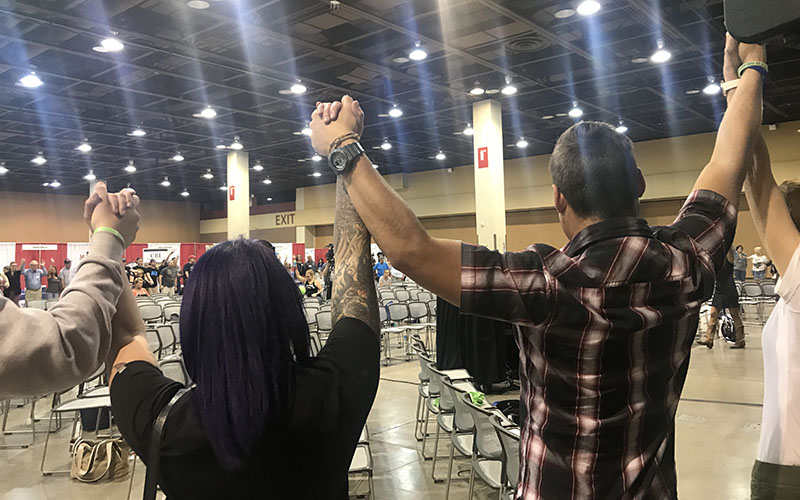PHOENIX – Teachers yell at students to get under tables and the sounds of gunfire ring in the air. One moment, Austin Eubanks was walking the halls of Columbine High School with his best friend. Minutes later, he was huddled under a table. He and his best friend were shot.
His friend died. Eubanks, wounded, was given opioids. It began his 10-year descent into addiction.
Eubanks shared his experience and his rough road to recovery with hundreds of recovering addicts and counselors in Phoenix last week. He also touched on the opioid crisis happening across the country and how it affects Arizona.
According to the Arizona Department of Health Services, in 2016 there were 790 opioid-related deaths that led to the call for a state of emergency. The Centers for Disease Control and Prevention last year chose Arizona for a $3.6 million grant to jump start the battle against opioid addiction.
Eubanks saw his best friend, Corey DePooter, die in the country’s first mass school shooting on April 20, 1999, where two seniors shot 13 students to death and injured more than 20 before killing themselves.
It wasn’t the physical pain that was pulling him down, Eubanks said. That was about an eight on a scale of ten. It was the emotional loss.
“It was agony beyond comprehension,” Eubanks said, describing it as “an absolute ten.”
Eubanks said taking the opioids brought a sense of euphoria and helped him temporarily escape his suffering.
He recovered in fits and starts.
“I had to figure out every way that didn’t work,” Eubanks said.
He would spend several months in a 12-step or other recovery programs that worked temporarily. Well, I can take a drink, he thought. Well, I can smoke pot, he thought. I just have to stay away from opioids and I’ll be fine.

People hold hands to show solidarity in fighting addiction at a Phoenix conference. (Photo by Shayla Hyde/Cronkite News)
But he wasn’t fine. He returned to opioids again and again.
Eubanks spent more than a decade trying and failing to recover from his addiction.
Then, six years ago, he woke up in a jail cell with no memory of how he got there.
He decided he was willing to do whatever it took to recover. Eubanks stuck with a program for 14 months, helping him to heal and become “less impulsive.”
Now, he shares his experience with other recovering addicts in talks throughout the country, such as last week’s Art of Recovery Expo in Phoenix, and in Tedx Talks.
Eubanks is now the chief operations manager at the Foundry Treatment Center in Colorado, a long-term recovery center for adults. He said the U.S. is in the middle of the “worst public health crisis” it has ever seen in the opioid epidemic.
Stephanie Siete, a conference speaker and spokeswoman for Community Bridges Inc., a recovery center, told Cronkite News that Arizona is one of the few states to classify the opioid problem as a crisis.
“It’s become normal,” Siete said of the epidemic. “It’s become everyday.”
Greg Halvorson, a program coordinator at Crossroads East treatment center in Phoenix, said at the expo he is a recovering addict.
“They need to make a decision,” Halvorson said of those wanting to seek recovery options. He said Crossroads is based on a 12-step program to help recovering addicts change their behavior.
Halvorson said he helps addicts overcome their problems to “allow somebody else” to be given the same opportunity he has been given.